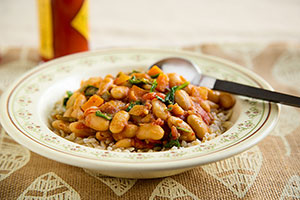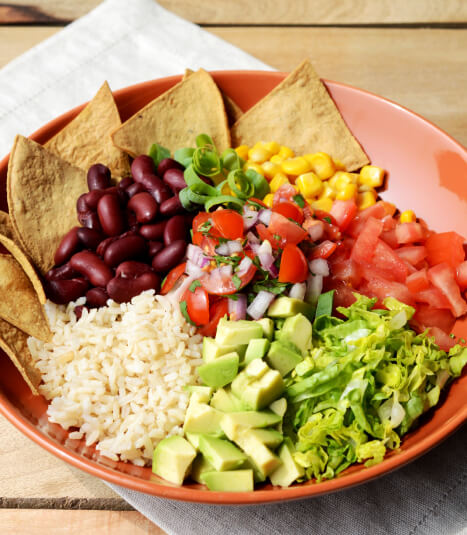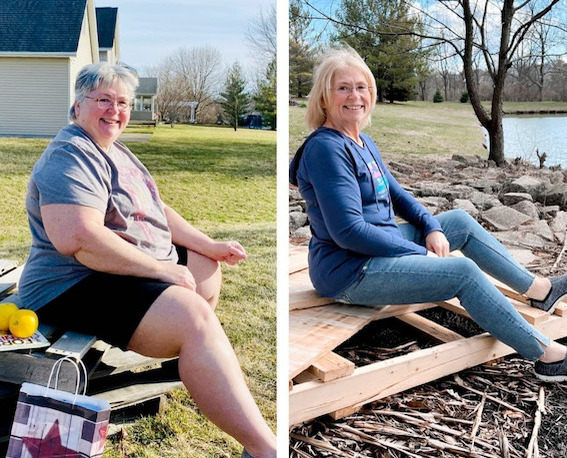Recipes from the November 2010 Newsletter
December 2010 Guest Chef
Miyoko Schinner
Miyoko is one of the McDougall cooking instructors for our live-in programs in Santa Rosa, CA. I have included some of her favorite holiday dishes in this month’s newsletter.
Miyoko has promoted healthful, vegetarian/vegan cuisine for 30 years. As the founder of Now and Zen, a vegan food manufacturer with nationwide distribution, she developed products such as the UnTurkey, HipWhip, a line of gourmet vegan cakes, and a low-fat vegan chocolate chip cookie that is still enjoyed by customers on United Airlines. She has written three vegan cookbooks and is a former contributor to publications such as Vegetarian Times Magazine. Miyoko, her products and her unique approach to vegan cuisine have been featured in numerous publications, television and radio shows, including the Washington Post, San Francisco Chronicle, Newsweek, New York Post, ABC World News Tonight, NPR’s Marketplace and California Report. She has given cooking demonstrations nationwide as well as in Japan. Currently, she is working on a vegan cooking series with a comic twist. She lives in Marin County with her husband, Michael and her three children, and enjoys being involved in community theatre and running in the hills with her dog.
Pumpkin Chestnut Soup
Miniature pumpkins make a lovely serving dish, but sugar pie pumpkins work as well.
10-12 miniature pumpkins, or 2 small sugar-pie pumpkins (enough to yield about 3 cups of pumpkin)
1 onion, sliced
½ apple, diced
15 ounces steamed chestnuts
6 cups vegetarian chicken stock or vegetable stock
½ cup white wine
½ teaspoon freshly grated nutmeg or more
1 cup cashew milk (or extra stock as needed)
Salt and pepper to taste
Pre-bake the pumpkins in a 350 degree oven for about 20-30 minutes until you can cut them easily with a knife. If using miniature pumpkins, cut off the tops and scoop out the seeds. Reserve the shells for use as the serving bowls. If using a sugar pie pumpkin, cut into quarters and scoop out the seeds. If desired, reserve the seeds for another use. Scoop out the softened flesh and measure; you should have about 3 cups (a little more will be fine).
Meanwhile, sauté onion in a small amount of water, covered, until tender. Add the pumpkin, apple, chestnuts, stock and wine. Simmer for about 15 minutes. Puree in a blender. Return to the pan and season with nutmeg, salt and pepper. To enrich, whisk in the cashew milk, or thin out with extra stock if needed. Pour into the pumpkin shells to serve.
Cashew Milk
½ to ¾ cup cashews
1 cup water
Combine cashews and water in a blender for 2 to 3 minutes until absolutely smooth. The more cashews you add, the richer the resulting milk will be. Straining is not necessary.
Squash Stuffed with Kale and Almond Risotto
8 Zephyr, acorn, or delicata squash
Water or stock for sautéing
½ cup Arborio rice
1 onion, diced
2 cloves garlic, minced
3 cups vegetable or vegetarian chicken stock
½ cup white wine (optional)
6 cups chopped kale
1 teaspoon rubbed sage
Salt and pepper to taste
½ cup almond meal
½ cup sliced almonds
In a 350 degree oven, prebake the squash for about 15 minutes until you can get a knife into it. If using Zephyr squash, place the squash on a cutting board, rotating to find a side that will allow the squash to sit and not roll over. Slice off the top of the bulbous part of the squash at a diagonal and scoop out the seeds. It will look like a large spoon (even more so after you have eaten them). If using acorn or delicata squash, pre-bake whole until just soft enough to cut in half. After cutting in half, remove the seeds.
While the squash are baking, you can prepare the risotto. In a heavy-bottom saucepan, heat the water or stock and add the diced onions and minced garlic. Over medium-low heat, sauté the onions and garlic until tender, adding a little salt to flavor. Add the dry Arborio rice, and continue to sauté for about 3 or 4 minutes. Add a half-cup of the stock and stir until mostly absorbed. Keep adding a half-cup of stock at a time, stirring almost constantly; this will prevent the rice from sticking and yield risotto suspended in a creamy sauce. After you have added about 2 cups of stock, add the wine, sage and kale. Continue by adding the final cup of stock in two increments, until the rice is somewhat tender but still has a hard core. Add the almond meal, stir well, and remove from heat.
Spoon this mixture into the hollowed-out squash. Sprinkle almond slices over the risotto and return to the oven to bake for about a half-hour.
Earthy Farro Risotto with Mushroom Medley
This is actually made with pearled spelt, which does not require the overnight soaking and 2 hour cooking that real farro does. It produces a result that is not as chewy as true farro, but is extremely rich and earthy in flavor and texture.
For the farro:
½ cup dried porcini mushrooms
1 cup hot water
1 large onion, diced
2 cloves garlic, minced
1 ½ cups farro or pearled spelt
5 cups mushroom broth
1 tablespoon chopped fresh thyme
1 tablespoon chopped fresh rosemary
Soak the porcini mushrooms in the hot water and set aside while you begin to prepare the risotto. Sauté the onions and garlic in a small amount of water or stock until tender. Add the farro and cook for a few additional minutes. Add one cup of mushroom broth and stir every couple of minutes while simmering. When the liquid has mostly been absorbed, add an additional cup of stock. Keep stirring often. Meanwhile, prepare the mushrooms as instructed below (the mushrooms can be prepared simultaneously with the risotto). For the risotto, continue cooking by adding another cup of liquid, stirring and simmering. After adding your third or fourth cup of broth, add the porcini mushrooms along with their soaking liquid. Stir and simmer until absorbed. Finally add the final cup of broth, thyme, rosemary and the mushrooms below and cook until the farro is al dente but tender. Serve immediately, and if desired, sprinkle some almond parmesan on top.
For the mushrooms:
8 cups sliced mushroom mixture – use a variety of mushrooms for flavor and contrast, such as shiitake, crimini, button, Portobello, oyster, king trumpet, etc.
½ cup red wine
2 tablespoons soy sauce
1 tablespoon mirin
2 cloves minced garlic
Place all ingredients in a large sauté pan with a lid. Cover and set over a medium flame. Allow to cook with the lid on for several minutes until juices have exuded and mushrooms have shrunk slightly. Then remove the lid and continue cooking, stirring occasionally, until most of the liquid has been absorbed.
Yuba Turkey Loaf with Roasted Mushroom and Chard Stuffing or Wild Rice and Fennel Stuffing
Thaw 1 pound frozen yuba.
Prepare a marinade for the yuba:
2 cups water and ½ cup powdered veggie chicken broth or 2 cups veggie chicken stock
2 tablespoons soy sauce
½ cup nutritional yeast
1 tablespoon agave
One sheet at a time, dip the yuba in this mixture and spread out. If necessary, the yuba can be crumpled in order to dip it. Repeat with the other sheets, stacking 4 sheets on top of each other. You will have 2-3 stacks total. Fold each one in half or quarters to fit the steamer. Steam for 30 minutes to 1 hour – the yuba will solidify. This can be done several days ahead of time and refrigerated until needed.
To assemble the yuba turkey, dip an additional sheet of yuba in water and place on a non-stick baking sheet. Place one of the yuba stacks on top. Pile high with stuffing of choice. Place another yuba stack or two on top and wrap the entire loaf with the sheet of yuba. Baste with:
½ cup water
1/3 cup light yeast flavoring
2 tablespoons white wine
Bake at 350 degrees for 1 hour, basting every 15 minutes or so.
Roasted Mushroom and Chard Stuffing
Spread out each of the following vegetables and bread separately on baking sheets, using several if needed:
1 pound small mushrooms, or larger ones, quartered or halved
1 bunch swiss chard, roughly chopped
2 onions, diced
3 stalks celery, sliced
1 pound ciabatta bread, cubed or torn
Sprinkle with salt and pepper and roast in a 400 degree oven until the vegetables are crisp-tender and the bread is lightly toasted, about 10-15 minutes. Combine all in a large bowl and toss with:
2 teaspoons sage
1 teaspoon thyme
1 teaspoon celery seed
3 cups ‘broth’ made from 3 cups water and ½ cup light yeast flavoring
Light Yeast Flavoring Powder
1 cup nutritional yeast flakes
1 tablespoon salt
½ teaspoon ginger
½ teaspoon turmeric
1 teaspoon black pepper
1 teaspoon dried marjoram
1 teaspoon dried tarragon
1 teaspoon paprika
1 teaspoon dried rosemary
2 teaspoons dried sage
2 teaspoons celery seed
2 teaspoons dried thyme
2 teaspoons garlic powder
2 teaspoons onion powder
Pulverize all the ingredients in a blender until powdered. Store in a jar in a cool place.
Wild Rice and Fennel Stuffing
In a saucepan, simmer until tender over low heat:
1 cup wild rice
4 cups vegetable stock
Sauté until tender in a small amount of water:
1 onion, chopped
1 bulb and a few stalks of fennel, sliced
Combine in a bowl:
The cooked wild rice
The sautéed vegetables
½ cup dried cranberries
3 tablespoons Sherry or Madeira
1 teaspoon sage
1 teaspoon rosemary
1 teaspoon thyme
Salt and pepper to taste
Fat-Free Gravy II
In a saucepan, place:
2 cups water
½ cup white wine
2 tablespoons soy sauce
3 tablespoons light yeast flavoring
½ cup cooked white rice
½ cup leftover stuffing, if available
½ cup cashews
Bring to a boil, reduce heat and simmer for 10 minutes. Puree until smooth.
Not Nog
3 cups soy milk (Vitasoy Creamy Original or Vanilla Delite are recommended)
½ cup to 1 cup raw cashew nuts
½ – ¾ cup maple syrup
2 teaspoons vanilla
Freshly grated nutmeg
Brandy to taste (if desired)
Puree milk, cashews, maple syrup and vanilla in a blender until creamy and frothy. Grate nutmeg and blend again. Add brandy if desired. Chill for several hours. Pour into glasses and grate additional nutmeg on top.
Pumpkin Bread Pudding
A comforting and warm alternative to pumpkin pie – also lower in fat since it has no pie crust. Serve with Brandy Nog Crème Anglaise.
To make this, you’ll want slightly stale or lightly toasted bread so that it soaks up the custard. You can use any kind of bread you like, but I recommend something on the lighter and whiter side and not sourdough (this is not the dish to use the heartiest wholegrain bread). Trim away the crust and cut into cubes. You can let it sit out overnight to dry, or toast it.
Preparing the Bread:
You will need a total of 6 – 7 cups cubed bread. The less bread, the more custard-like it will be. Trim away the crust from about 1 pound of unsliced bread. Slice and cube. If the loaf is fresh, spread the bread on a sheet pan and toast at 350° for about 10 – 15 minutes until dry but not brown. Otherwise, you can just spread it out on a sheet pan and let it air dry overnight.
Preparing the Pumpkin Custard:
Preheat the oven to 350°. In a blender or food processor, combine and blend until smooth:
1 pound pumpkin (canned is fine)
8 ounces medium tofu, mashed
½ cup soy or almond milk
1 cup maple syrup
2 teaspoons cinnamon
½ teaspoon freshly grated nutmeg
1 teaspoon ginger
½ teaspoon sea salt
2 tablespoons cornstarch or arrowroot
Lightly oil a baking dish big enough for the bread cubes to fill it half-way. Pour the Pumpkin Custard mixture over the bread and mix well with a spoon. If desired, mix in:
½ cup raisins
Cover the dish with parchment paper, then with aluminum foil and bake for about 40 minutes until the custard has set. Serve warm with Brandy Nog Crème Anglaise.
Brandy Nog Crème Anglaise
In a saucepan, combine the following:
1 cup cashew crème
1/3 cup maple syrup
1 tablespoon brandy (optional)
1 vanilla bean, split
pinch of salt
1 – 2 tablespoons sugar (optional)
Bring to a gentle simmer over low heat while stirring frequently with a wooden spoon. As it heats, it will thicken. The sauce is ready when it is thick enough to coat the back of the spoon.
Recommended Articles
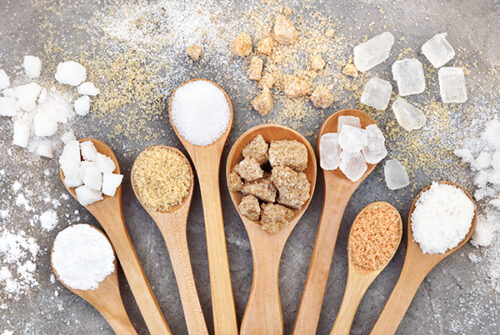
Sugar: Adding Pleasure to the Satisfaction of Starches
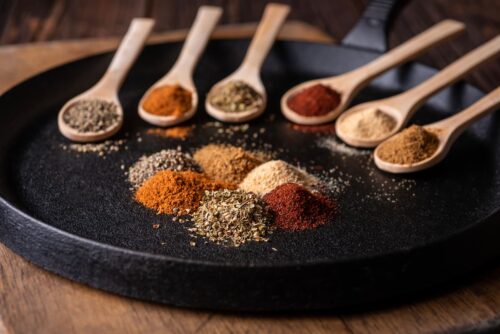
Are There Any Spices to Avoid with Diabetes?
